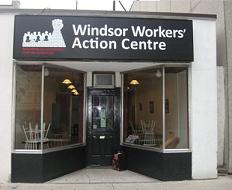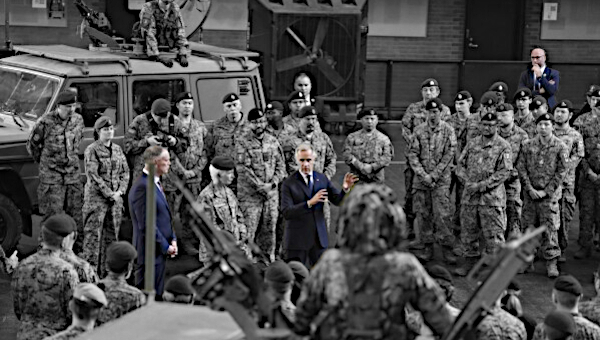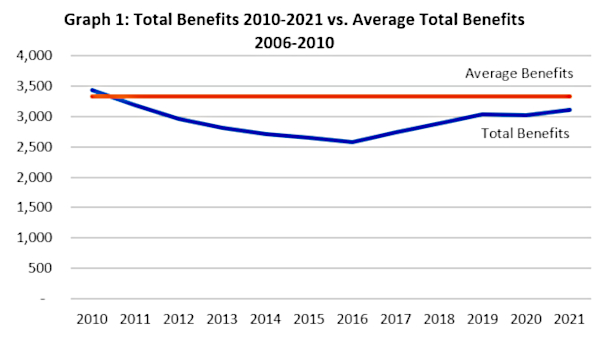Renewing Workers’ Struggles in the Crisis: The Windsor Workers’ Action Centre
In 1946, Windsor’s working class was at the epicentre of dramatic changes to Canadian workers’ lives, organizations, and relationships to employers. The settlement of the UAW’s 1945 Ford strike established a key element in the post-war labour-management relationship: the automatic dues check-off, the closed shop, and a basis for unions’ financial security and collective bargaining strength. These victories ushered in an era of confidence in the role of unions to improve workplaces and standards of living, made a relatively comfortable and secure life available to auto workers and their families, and turned the UAW’s (and later the CAW’s) local unions into recognized leaders in Windsor’s social justice struggles for the next 50 years.
In 2009, the city’s auto workers are again on the front lines, but this time of an unprecedented crisis in the auto industry which may alter forever the capacity of unions to make and protect meaningful gains for workers and their communities. The effects of this crisis were evident in the streets of Windsor long before the collapse of credit in the fall of 2008 exposed the North American auto sector’s accumulated weaknesses. Between 2002 and 2006, Windsor’s pool of secure, well-paying and unionized manufacturing jobs declined by 28%. By January 2009, the community’s official unemployment rate was 11.2% (with actual unemployment probably much higher), well above the national average of 7.2%. Residents could see the evidence of economic downturn all around them, in the hundreds of ‘For Sale’ signs lining residential streets, the growing line-ups at soup kitchens and food banks, the countless boarded-up store fronts, and the increasing regularity with which long-standing industrial employers suddenly shut their doors. In May 2007, a major community mobilization of nearly 40,000 people highlighted the destructive effects of manufacturing job loss on Windsor’s economic and social life and pressed for government intervention. However, since then, the problems of unemployment, marginalization and poverty, the polarization between those with jobs and those without, and a prevailing sense of hopelessness about the possibilities of collective action have only deepened.
All this raises hard questions about whether working class and progressive organizations, as they’ve evolved over the past 50 years, are capable of addressing the realities and problems of today’s working classes. And, like Windsor’s previous generations of workers, some are responding to today’s crisis in workers’ organizations with bold attempts to invent something new. On November 1st 2008, the Windsor Workers’ Action Centre (WWAC) held its grand opening to a standing-room-only crowd, hoping to add a new dynamic to the community’s social justice struggles and generate new kinds of workers’ organizations that can help people survive the crisis but also build unity and capacity to put workers’ alternatives to capitalism back on the table.
Origins

The WWAC is the visible outcome of recent attempts to strengthen relationships and alliances amongst Windsor’s progressive grassroots organizations and overcome the many forms of fragmentation that plague the movements. In February 2007, a group of faculty and students from the University of Windsor’s Labour Studies Programme began meeting regularly with a wide range of labour and social justice activists under the banner Work in Progress (WIP). The group recognized the strengths and diversity in Windsor’s extensive activist community, including an active peace coalition, long-established environmentalist organizations, alternative media that included a monthly newspaper and a weekly radio show on working class issues, an annual Labour Arts Festival and a vibrant community of local artists, and an historically strong and community-minded labour movement which regularly elected NDP candidates to federal parliament.
However, there was also a sense that, somehow, the movements were weaker than the sum of their parts. Windsor’s Coalition for Social Justice, important in the Ontario Days of Action in the mid-1990s, might have played a unifying role but was long defunct. The Windsor and District Labour Council includes a Social Justice Member-at-Large on its Executive Board and has gathered some key community-based activists around it, but remains primarily a space to bring together unionized workers’ representatives. Even where meeting points between struggles existed, most activists felt enormous pressure to focus on their own projects and organizations, working in silos and unable to extend meaningful support for multiple struggles over time. In this context, embarking on a more fundamental rethink of approaches to organizing was an exhausting prospect for many local activists, no matter how debilitating that fragmentation might be.
WIP’s monthly meetings focussed not only what was missing but also how, through collaborating on concrete projects, the gaps might be filled. The idea of a central, common space for workers and activists from across the community to gather emerged early in the discussions. In previous periods of struggle, workers’ independent social and cultural spaces outside the workplace – what Alan Sears has called the “infrastructure of dissent” – allowed workers to gather, socialize, debate and argue, develop their own forms of cultural expression as well as bonds of friendship and solidarity that could underpin difficult struggles as well as generate alternative perspectives. However, these spaces have largely disappeared, become commercialized, or are not universally accessible to everyone.
For non-unionized workers, union halls are difficult to enter given the broader cultural atmosphere of anti-unionism, the resentment fostered against unionized workers, and the fear of reprisal from employers if seen associating with the movement. Many workers also feel out of place on university campuses, as a space dominated by intellectual and cultural elites speaking a different language and who are often seen to (and often do) have contempt for working class people. WIP thus prioritized the need to create a new, ‘neutral’ gathering space which would allow not only for groups to meet free of charge to organize their own grassroots initiatives, but also for people to encounter each other, discover unexplored connections between their interests and struggles, and begin to develop broader forms of consciousness.
Another goal of this space was to challenge the artificial line often drawn between struggles in ‘the workplace’ and those in ‘the community’ and the way that line is reflected in progressive organizations’ membership and activities. Since workers’ lives don’t conform to those boundaries, activists needed to better understand and organize around the intersections between work-based inequalities and injustices and those experienced in the family, in schools, in the grocery store, in neighbourhoods, and in the city. While reminiscent of the tradition of social unionism which has motivated much of the CAW’s and other Canadian unions’ engagement with struggles outside the workplace, there was a sense that unions still have not prioritized organizing around working class issues and problems outside of the workplace, a situation grown more acute as unions defend their dues-paying members against employers’ and governments’ demands for concessions in exchange for jobs.
Finally, and linked to the above, WIP members wanted to develop new means of reaching out to and organizing non-union, ex-union and unemployed workers. Particularly vulnerable to employers’ unilateral decisions and violations of the Employment Standards Act, non-unionized workers have few places to go to meet other workers, discuss their common experiences, get information about their rights, and take collective action. Most community-based services for precarious or unemployed workers, like labour market adjustment and retraining centres, do fill real needs, and their staff do a great deal with very few resources. However, these services are designed to help individuals fit into and cope with the labour market through skills training, resume writing, and employment counselling. They rarely help workers develop collective responses to unemployment or to workplace problems encountered once employed, nor do they emphasize or challenge the structural bases of inequality in the labour market or workplace. Also, the CAW’s strategy of using buyouts as a way to mitigate layoffs (while allowing employers to permanently reduce the workforce) has generated a growing number of ex-union members in the community, some of whom were local union activists. As these workers drift away into other workplaces or struggle to find new jobs, and with nothing to connect them to their former union or workplace community, they experience isolation and the dissipation of their activist knowledge, experience and capacities. Inspired by the workers’ centre movement in the United States and in other Canadian cities, WIP also aimed to support low-wage, precarious, or unemployed workers’ attempts to improve their own lives and working conditions through popular education and organizing community and collective action.
The First Five Months
While an ambitious set of goals, this vision fuelled the group’s commitment to locating, renovating, financing and finally opening the Windsor Workers’ Action Centre in downtown Windsor last fall. Though in its early days, the WWAC’s first five months have already produced a flurry of activity and collaboration. In January, WWAC set up a phone line, staffed by students and faculty from the University of Windsor’s labour studies and law programmes, for workers experiencing difficulties with their employers or with accessing government services like Employment Insurance or Workers’ Compensation. Acting as an information clearinghouse, the WWAC phone line refers callers to Legal Assistance Windsor, local lawyers, and community-based services. WWAC has also developed and delivered workshops on employment standards to the Windsor Unemployed Help Centre and Windsor Women Working With Immigrant Women (which helps place immigrant women in jobs), and plans to develop ones on EI and WSIB. While this work emphasizes service provision, the hope is that, in the long run, people who call the Centre for advice will also actually come to the Centre and meet others in similar circumstances. And people are dropping into the Centre during the day, just to check it out and talk about their workplace problems, which exposes them to other cultural and political activities going on there.
One such popular initiative is the free weekly Friday Night Movie. Any individual or organization can sign up to screen a film and lead a discussion. So far, groups as varied as Engineers without Borders, Natural Parents, FedUp Community Gardening Network, the University of Windsor’s Social Justice Law Society, and the CAW’s Windsor Regional Environmental Council have screened films. The movie night works to create social relationships, generate dialogue and debate about important issues facing the community, and is also an important form of outreach, drawing in people not already engaged and who might not come to a more overtly political meeting.
WWAC also provides free meeting space for various social justice organizations, such as the FedUp Community Gardening Network, the Windsor Peace Coalition, the Windsor Fair Trade group (working to make Windsor into fair trade city), and a spirituality group. Bringing these diverse organizations and people into a common space is already challenging the fragmentation of struggles in concrete ways, as people comment that they weren’t aware of other projects going on in the community until they came to WWAC. In that sense, interest in one group or event can be a route into other forms of activity, making it possible to expand involvement and build relationships of mutual support.
But perhaps most exciting are the projects emerging spontaneously out of encounters between people drawn to the space for other reasons. A key example is the project to build an Independent Media Centre which would bring together Windsor’s multiple independent media, such as the monthly paper The Scoop, the weekly radio show All in a Day’s Work, and the Scale Down Windsor blog, into a common physical space offering skills-training in media production (such as building blogs, digital video production, and podcasting) and allowing for cross-fertilization, mutual support, and a higher profile for alternative perspectives in the local media environment. Similarly, the Centre is emerging as a space where educators can experiment with forms of popular education outside of the official context of university or union. The first such project is a free seven-week Philosophy for Workers course, which began in February 2009.
Challenges
Despite the energy, enthusiasm and creativity being poured into this Centre, there are real and difficult challenges in building a new form of workers’ organization. The most pressing is that of resources, both financial and human. At the moment, WWAC operates on the basis of monthly donations from individual supporters, which has permitted the rental and renovation of the space, but not much else. Without money for full-time staff or programming, the Centre relies on volunteers whose deep personal commitment to the project may eventually be outstripped by other demands or burnout. As with all such organizations, accessing more stable sources of income involves a complex navigation of the implications of getting resources from particular places, such as unions or foundations, or of becoming a registered charity and the limits that can place on particular forms of political expression. For an organization that sees itself as challenging the systemic causes of economic and social inequalities in political (if not partisan) means, the question of independence is key. WWAC’s future development will thus be shaped by the means that longer-term funding is secured.
Reaching out to and communicating with those most marginalized from the left’s organizations is also a difficult challenge. Given scarce resources, WWAC faces a major debate over which constituency to focus on and how best to do this. The desire of some to build greater working class consciousness and unity takes place in a real context of working class fragmentation, raising the question of whether it’s possible to simultaneously organize low-wage, marginalized, immigrant, undocumented, unemployed, and student workers, all the while linking to union and community activists. Indeed, most workers’ centres have a more clearly defined constituency, whether in terms of ethnicity or employment status, precisely because of the difficulties inherent in organizing workers as a class. If it is not to replicate the kinds of boundaries that were seen as obstacles in the labour/progressive movements, WWAC’s challenge is thus to figure out how to organize amongst workers as they are while challenging the fragmentation that differentiates and separates them from each other.
This also speaks to the broader difficulty of organizing in hard times. In some senses, servicing, whether by unions or community agencies, is ‘easier’ in that it is a form of coping that doesn’t require much risk from either service providers or recipients. There is already existing capacity in Windsor for supporting individual workers in their dealings with unionized employers, government programmes and services. It’s organizing collective action that’s difficult, because it requires that people risk themselves both materially and psychologically. Many people, whether unionized or not, are well aware of the pervasive injustice of the current state of affairs, but are sceptical that collective action can change these circumstances. If the CAW, the most powerful union in Windsor, must take major concessions to preserve jobs, what can other organizations do? The WWAC – and other workers’ organizations like it – needs to find ways of building people’s confidence to struggle, which can only come from developing effective ways to struggle and make real gains. To this, there is no easy answer. But the Windsor Workers’ Action Centre is committed to confronting the question and experimenting with new ways to answer it. In the present moment, that in itself is a major contribution to the regeneration of workers’ struggles. •
A version of this article is in the current issue of Canadian Dimension.





